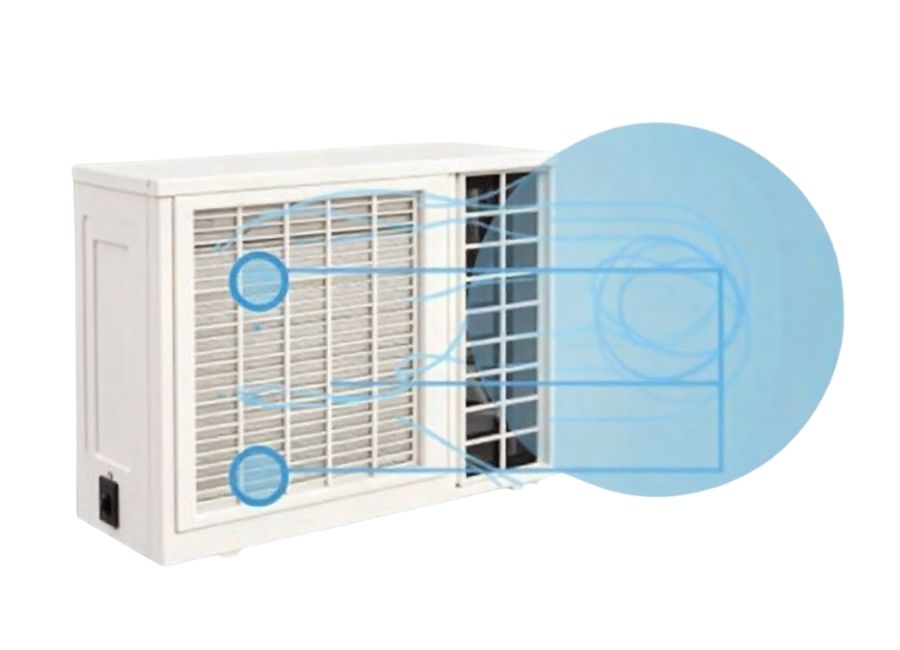Your air conditioner has several settings, but one of the most underutilized is fan mode. While most people stick to cooling or heating modes, fan mode can be a game-changer for comfort and energy savings. Understanding when and how to use this feature can help you create the perfect indoor environment while keeping your electricity bills in check.
Fan mode circulates air throughout your home without activating the cooling or heating elements. Think of it as turning your air conditioner into a powerful ceiling fan that uses your existing ductwork. This simple switch can make a significant difference in your daily comfort and monthly energy costs.
What Is Fan Mode and How Does It Work?
Fan mode activates only the blower fan in your air conditioning system. Unlike cooling mode, which runs both the fan and the compressor to remove heat and humidity, fan mode simply moves air around your space. The compressor stays off, which means no refrigerant cycles through the system.
When you select fan mode, the indoor unit’s fan draws air from your home, circulates it through the ductwork, and pushes it back into your rooms. This creates airflow that can make you feel cooler through the wind chill effect, even when the actual temperature remains unchanged.
Most modern air conditioners offer two fan mode options: continuous fan mode and auto fan mode. Continuous mode keeps the fan running constantly, while auto mode cycles the fan on and off with your thermostat settings.
Best Times to Use Fan Mode
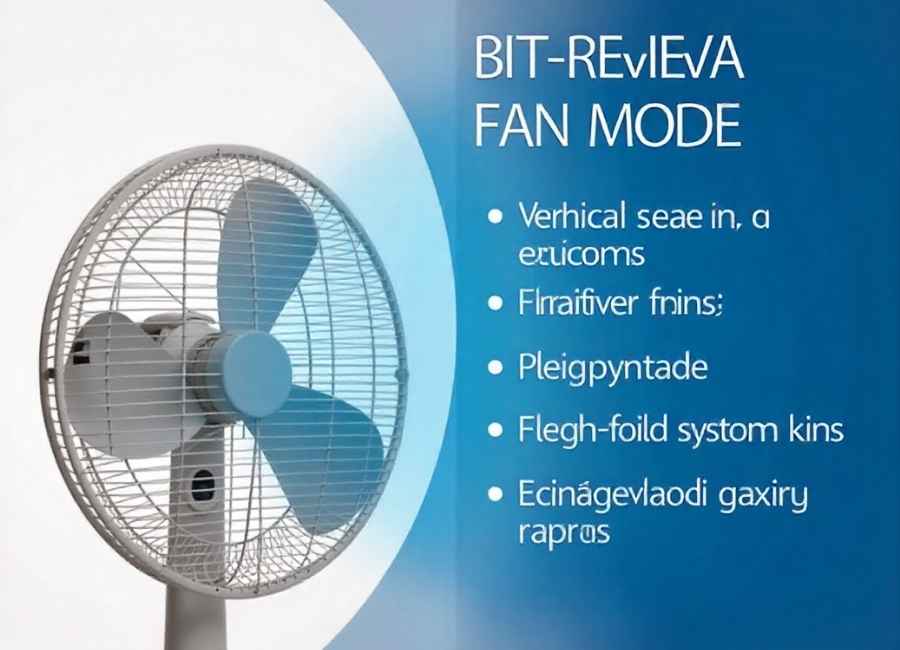
During Mild Weather
Fan mode shines during spring and fall when outdoor temperatures hover in the comfortable 65-75°F range. Instead of switching between heating and cooling throughout the day, fan mode can maintain steady air circulation that prevents stuffiness without the energy cost of running the compressor.
This is particularly effective during shoulder seasons when morning and evening temperatures differ significantly from midday highs. The circulating air helps even out temperature variations throughout your home.
After Cooking or Showering
Heavy cooking sessions and hot showers can create pockets of heat and humidity in your home. Fan mode helps distribute this concentrated warm, moist air throughout your living space, preventing uncomfortable hot spots and reducing the likelihood that you’ll need to crank up the air conditioning.
The improved air circulation also helps moisture evaporate more quickly, reducing humidity levels naturally without the energy expense of running your AC’s dehumidification cycle.
When Working from Home
If you spend long hours in a home office, fan mode can prevent that stuffy, stagnant feeling that builds up in closed rooms. The constant airflow improves air quality and comfort without the temperature fluctuations that come with traditional cooling cycles.
This steady air movement also helps prevent the drowsiness that often accompanies poor air circulation, potentially improving your productivity and focus.
During Sleep Hours
Many people find that gentle air circulation helps them sleep better. Fan mode provides this benefit while using significantly less energy than keeping your AC running all night. The consistent airflow can also help mask minor noise disturbances that might otherwise wake you.
Unlike window units or portable fans, fan mode uses your central air system to create whole-house circulation without the direct airflow that some people find disruptive to sleep.
Energy and Cost Benefits
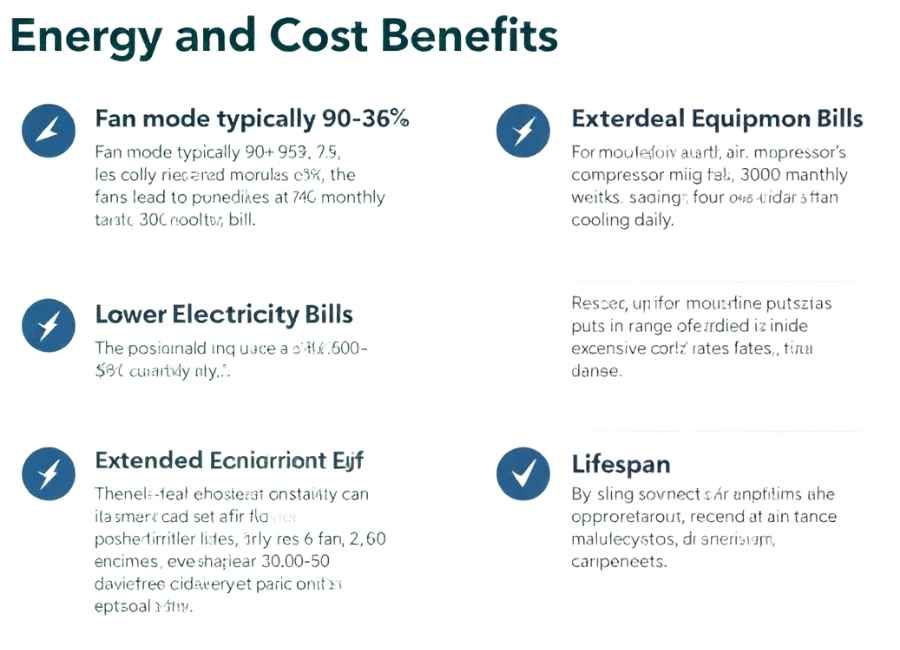
Lower Electricity Bills
Fan mode typically uses 90-95% less energy than cooling mode. (Fan Mode on Portable Air Conditioners: How It Works and When to Use It, n.d.) While your air conditioner’s compressor might draw 3,000-5,000 watts, the fan alone usually consumes just 300-500 watts. (Does a Fan or Air Conditioner Use More Electricity?, n.d.) This dramatic difference can lead to substantial savings on your monthly electricity bill.
For households that can use fan mode instead of cooling for even 4-6 hours daily, the monthly savings often range from $20-$50, depending on local electricity rates and home size.
Extended Equipment Lifespan
Running your AC compressor constantly puts significant strain on the system’s most expensive components. By using fan mode when appropriate, you reduce compressor runtime, potentially extending your air conditioner’s lifespan by several years.
The reduced wear and tear can also mean fewer repair calls and lower maintenance costs over time.
Environmental Impact
Lower energy consumption translates directly to reduced environmental impact. (The potential for indoor fans to change air conditioning use while maintaining human thermal comfort during hot weather: an analysis of energy demand and associated greenhouse gas emissions, 2022) By choosing fan mode over cooling when possible, you’re decreasing your home’s carbon footprint and contributing to reduced strain on the electrical grid during peak usage periods.
Situations to Avoid Fan Mode
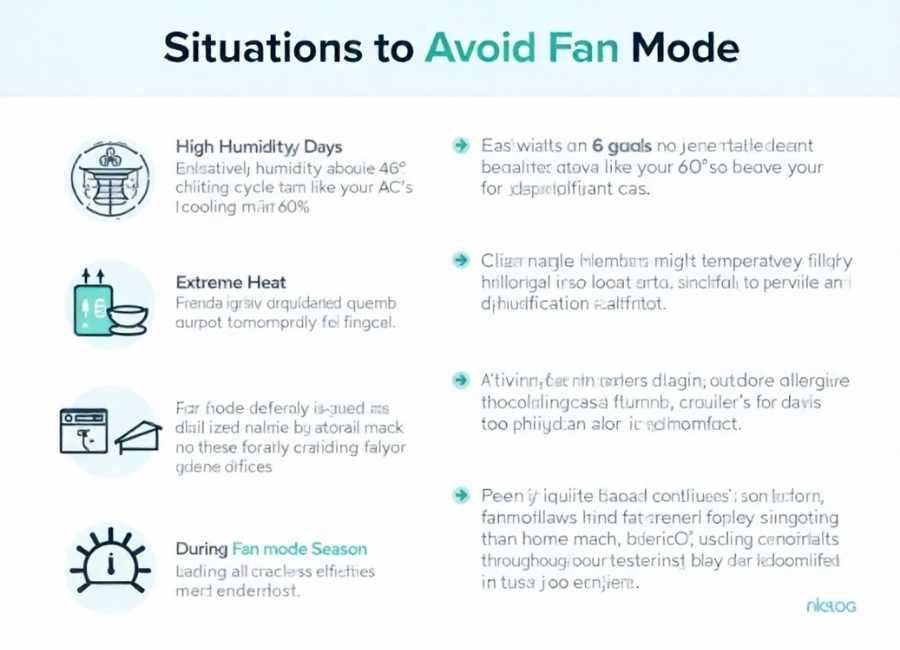
High Humidity Days
Fan mode doesn’t remove humidity from the air like your AC’s cooling cycle does. On particularly humid days (relative humidity above 60%), fan mode might actually make you feel less comfortable by circulating moist air without providing any dehumidification benefits. (Does air conditioning increase or decrease humidity?, n.d.)
Extreme Heat
When outdoor temperatures exceed 85-90°F, fan mode alone typically won’t provide adequate comfort. The circulating air will be too warm to create the cooling sensation that makes fan mode effective.
During Pollen Season
If family members suffer from allergies, continuous fan mode during high pollen days might circulate allergens throughout your home more than necessary. In these cases, using your AC’s cooling mode with its filtration system might be more beneficial.
When Air Quality Is Poor
During wildfire season or periods of poor outdoor air quality, running fan mode can circulate contaminated air throughout your home if your system draws in outside air. Keeping your system in recirculation mode or using cooling with enhanced filtration is usually preferable.
Tips for Maximizing Fan Mode Benefits
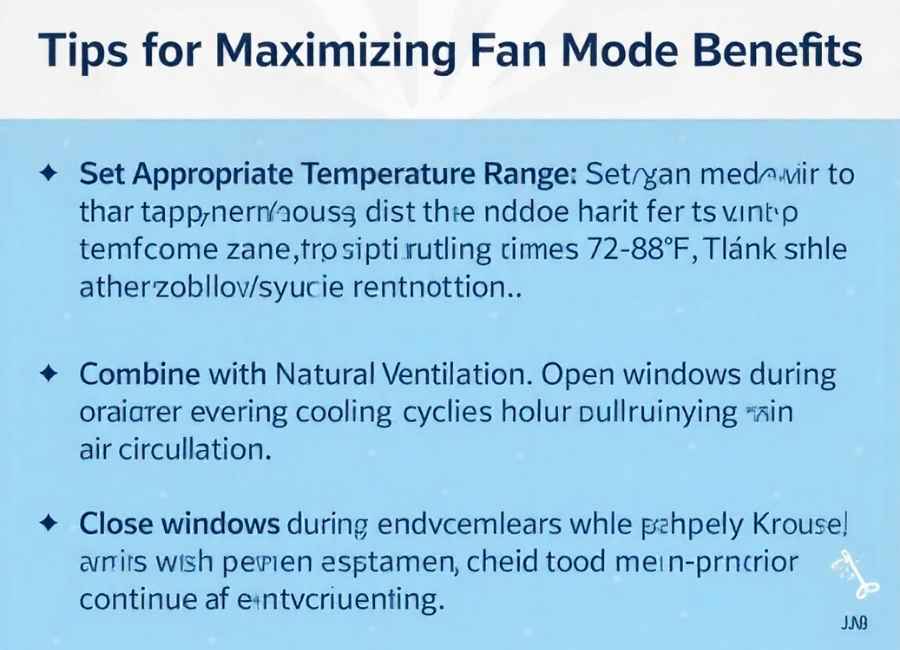
Set Appropriate Temperature Ranges
Program your thermostat to use fan mode when indoor temperatures fall within your comfort zone (typically 72-78°F for most people). This prevents unnecessary cooling cycles while maintaining air circulation.
Combine with Natural Ventilation
Open windows during cooler evening hours while running fan mode to pull in fresh, cool air. Close windows and continue fan mode during warmer daytime hours to circulate the cooler air throughout your home.
Use Smart Scheduling
Many modern thermostats allow you to schedule fan mode during specific hours. Consider setting it to run for 15-20 minutes each hour during mild weather periods, providing circulation benefits while minimizing energy use.
Maintain Your System
Clean or replace air filters regularly when using fan mode frequently. Since the fan runs more often, filters may need more frequent attention to maintain proper airflow and system efficiency.
Making Fan Mode Work for Your Home
Fan mode isn’t a one-size-fits-all solution, but it can be a valuable tool in your home comfort toolkit. Start by experimenting with fan mode during mild weather days to get a feel for how it affects your comfort levels and energy usage.
Pay attention to your home’s unique characteristics. Homes with good insulation and multiple levels often see the greatest benefits from fan mode, as it helps distribute air more evenly between floors and rooms. (When to Use Fan Mode in AC: A Complete Guide, n.d.)
Consider your local climate patterns as well. Regions with significant day-night temperature swings often provide the best opportunities for effective fan mode use.
Understanding when to use fan mode can transform your approach to home climate control. By strategically incorporating this underused setting into your daily routine, you can enhance comfort, reduce energy costs, and extend your air conditioning system’s lifespan. The key lies in recognizing the right conditions and making fan mode part of your overall home comfort strategy.







